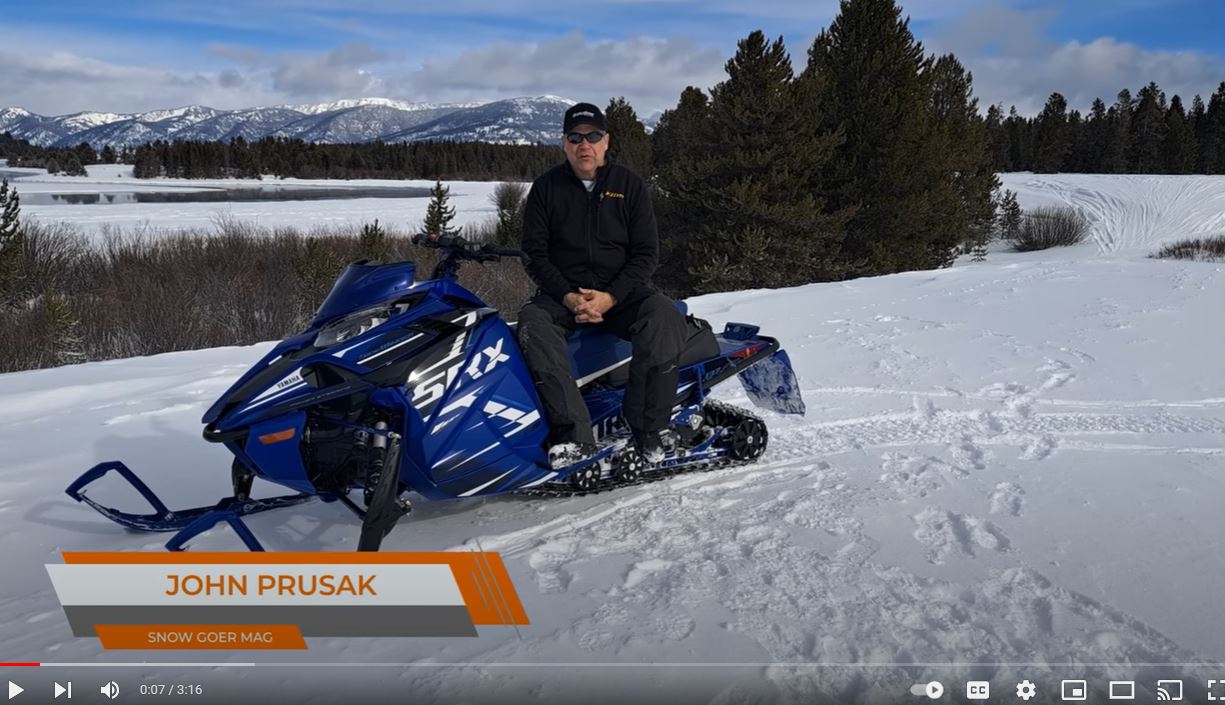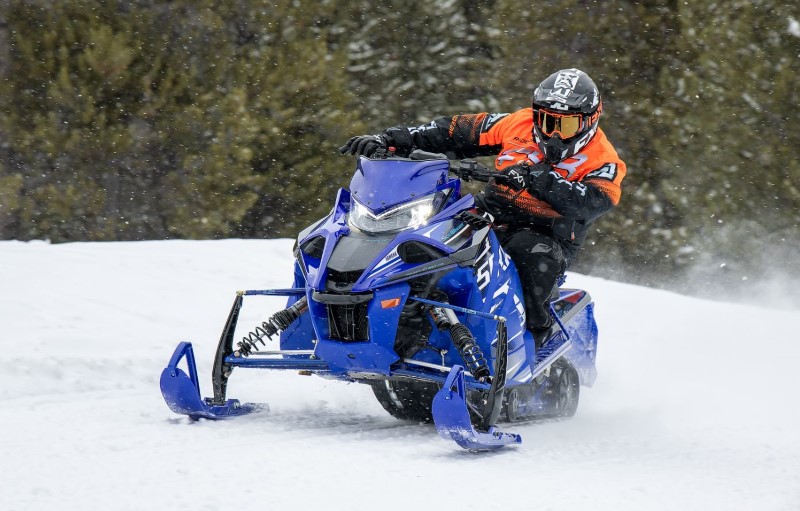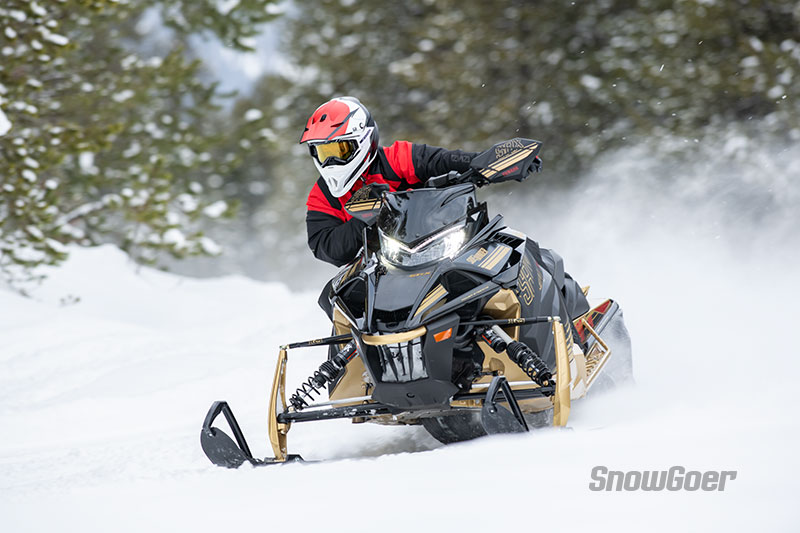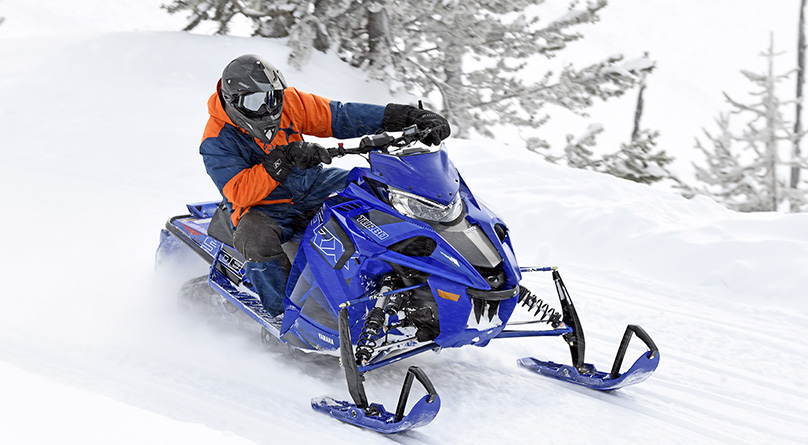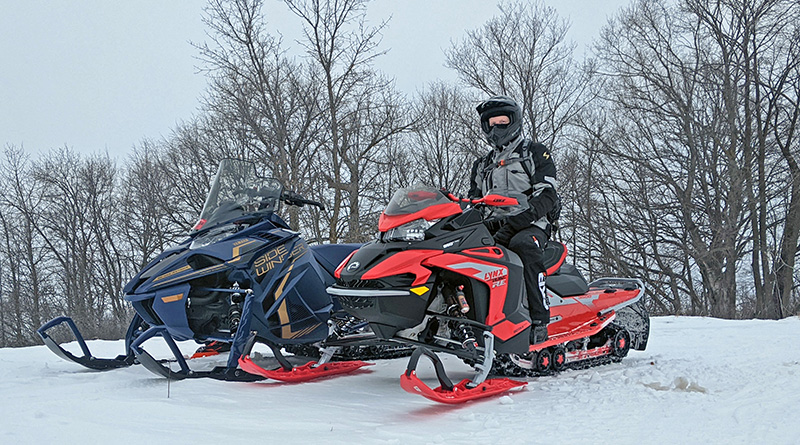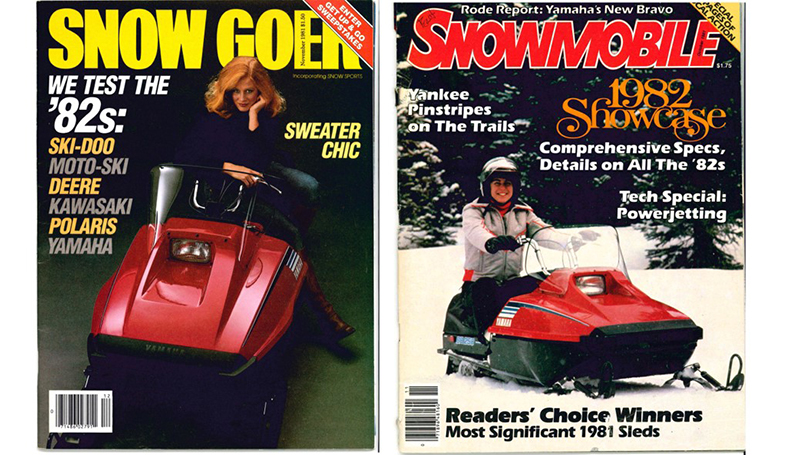An excellent example of the track-to-trail technology transfer that drove snowmobile development hard and fast during the vintage era, the new 1976 Exciter was basically a ’75 GPX Stock racer with a fan-cooled engine to appeal to the many riders who didn’t believe in free-air power for trail use.
And as one of the first Yamaha sleds to carry a memorable model name rather than alphabetic gibberish nomenclature, the Exciter helped to break new ground in Yamaha snowmobile marketing to become one of the most important models in the brand’s long history.
Excitement Begins
The Exciter burst onto the scene during the evolution from snowmobiles as family utility machines that could play a little bit to pricey personal recreation devices. Although equipped with passenger grab handles, it was really a fairly large single-seater that was intended to provide lively entertainment for one person.
Initially offered with a choice of 340 or 440 engines, both of which were stronger than average for their displacement, the Exciter was also well very equipped for the day. Full instrumentation, parking brake, tether switch, chrome ski shocks, CD ignition and especially Yamaha’s Autolube oil injection, a huge convenience not found on any other brand in the industry at the time, combined to make this a premium trail performance sled in every respect.
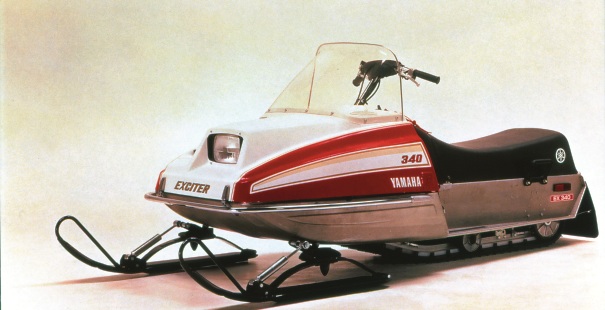 And the Exciter was also one of the first snowmobiles to be fitted with a shock absorber charged with compressed nitrogen over oil instead of the usual air over oil, resulting in better rear suspension performance. This Yamaha development began the move toward the huge variety of better performing gas shocks that we enjoy on today’s snow machines.
And the Exciter was also one of the first snowmobiles to be fitted with a shock absorber charged with compressed nitrogen over oil instead of the usual air over oil, resulting in better rear suspension performance. This Yamaha development began the move toward the huge variety of better performing gas shocks that we enjoy on today’s snow machines.
Sales of the appropriately named Exciter took off immediately, expanding what the GPX had done to establish a trail performance identity for Yamaha, a new image that was critical for success in the increasingly performance-driven snowmobile industry of the 1970s.
Snow Goer evaluators were really pleased with the new model, saying that “all we had to write about (previously) was Yamaha’s durability and consistently strong engine. But that’s all over.” They went on to say that the Exciter was “fast and super quick,” but also noted clutch problems with the test unit.
According to an owner’s survey published the following season in Snow Sports magazine, first year Exciter buyers were generally happy with their new ride, praising its handling and stability, overall performance and oil injection. But on the other hand, many did not like the fuel economy or the grabby clutching that quickly wore belts and required frequent lubrication. As one owner put it, “It has bugs. But for a first year model, it’s great.”
The Exciter really hit stride with the 1977 model. Revised porting provided a modest power increase. But the real improvement resulted from another race track technology transfer, the drive clutch from the SRX suitably retuned for the fanner’s power band. The new clutch improved efficiency to deliver about 5 more horsepower to the track while improving belt life and gas mileage at the same time.
Excitement Continues
The Exciter was continually improved in typical Yamaha fashion. The 1978 model brought a new Keihin carb that improved fuel economy, new bearing materials in the drive clutch for better reliability, a more tapered tunnel, new seat and footrests, an 8-gallon gas tank and relocated larger instruments for better readability. And the 1979 version changed hood color to black with red trim. It was also the last year for the 340 version. The 1980 models are very distinctive with their gold tunnels and a return to gold trim on the hood.
The Exciter lasted through the 1981 model year when it was functionally replaced by the sleeker SS 440, but the name was resurrected a few years later for a new water-burner pogo stick model.
By the end of its initial six-year run, the original Exciter had been a huge asset for Yamaha in weathering the final stages of the great manufacturer shake-out. It had significantly helped to establish the company as a builder of performance-oriented trail sleds that people actually wanted to buy, and helped vault Yamaha over other manufacturers into a position where they would soon assume snowmobile industry sales leadership.
My buddy Tony “Yammiegod” Bellucco sums up the Exciter as “One of the best Yammies of all time. I’ve seen some of these sleds with over 9,000 miles and they still run like new.”
1976 Yamaha Exciter 440
Manufacturer: Yamaha Motor Company Ltd., Hamamatsu, Japan
Powertrain
Engine: 433cc Yamaha reed valve 7-port “Torque-Induction” axial fan-cooled twin with one Keihin PW42-38 slide valve carb.
Ignition: Hitachi CD with RFI suppression spark plugs
Power Output: 48 HP @ 7,500 RPM
Drive & Driven Clutches: Yamaha
Chassis Specs
Type: Riveted and welded aluminum tunnel with steel bulkhead, aluminum belly pan, chromed
tube steel bumpers and fiberglass hood
Dry Weight (estimated): 380 pounds
Front Suspension: Four leaf springs with chromed hydraulic shock absorbers
Ski Stance: 35.5 inches
Rear Suspension: Slide rails with torsion springs and one mid-mount gas shock absorber
Track: 15 by 116-inch fiberglass-reinforced molded rubber with dual sprocket drive
Brake: Self-adjusting mechanical disc with parking brake
MSRP: $ 1,799
This Timeline article was first published in the February 2014 issue of Snow Goer magazine. To regularly see the product tests, machine evaluations, destination stories, historic features and other snowmobile-centric information, subscribe to Snow Goer today using this link.
.

